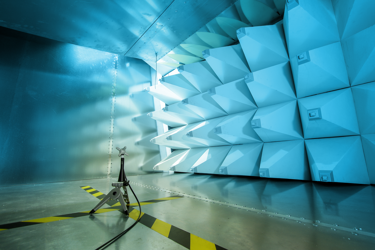EMC Testing And Amplifier Selection

Electromagnetic Compatibility (EMC) testing ensures devices operate without causing or experiencing interference, with immunity testing requiring high-power RF signals to simulate real-world electromagnetic conditions. Amplifiers are central to this process, and proper selection is critical for accuracy, repeatability, and compliance. Key considerations include frequency range, power output, linearity, gain stability, VSWR tolerance, cooling, modulation capability, and adherence to EMC standards.
Different industries mandate varying frequency and field strength requirements—ranging from commercial IEC 61000-4-3 tests at 80 MHz–6 GHz to military MIL-STD-461 RS103 tests up to 40 GHz and beyond. Broadband amplifiers are preferred, as they reduce the need for switch matrices, minimizing insertion loss and cost.
Power must be calculated based on required field strength, antenna gain, distance, and insertion loss. Class AB amplifiers offer a balance of efficiency and linearity, lowering cooling demands and operational costs compared to Class A designs, while meeting most EMC linearity requirements. GaN-based Solid-State Power Amplifiers (SSPAs) provide excellent gain stability, soft compression, and high reliability, making them strong replacements for legacy Traveling Wave Tube (TWT) technology.
Maury Microwave’s broadband GaN Class AB amplifiers—covering bands such as 2–18 GHz, 6–18 GHz, and 18–40 GHz—support faster, wider frequency sweeps, reducing test time and front-end components. Complementary products include high video bandwidth power sensors, low-loss broadband couplers, and amplitude/phase-stable cables.
By selecting amplifiers that align with test requirements, engineers can ensure reliable, repeatable measurements while maintaining compliance, reducing costs, and improving EMC test efficiency.
Get unlimited access to:
Enter your credentials below to log in. Not yet a member of Wireless Design Online? Subscribe today.
